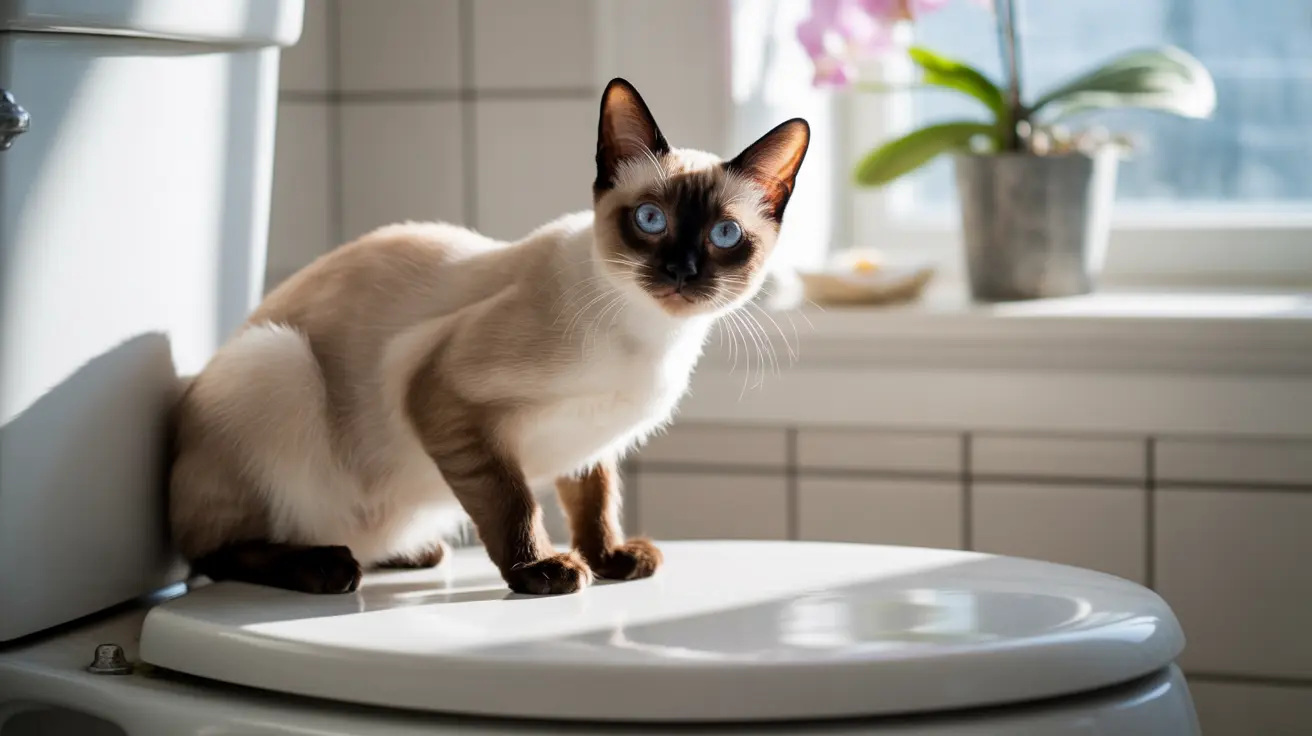Are you tired of dealing with messy litter boxes and looking for an innovative solution to your cat's bathroom needs? Training your cat to use a toilet might sound like an impossible task, but with the right approach, patience, and specialized training systems, it's a realistic goal for many feline companions.
Toilet training your cat can be a game-changer for pet owners seeking a cleaner, more convenient alternative to traditional litter boxes. However, it's a process that requires careful consideration, understanding of your cat's behavior, and a step-by-step approach.
Understanding Cat Toilet Training Basics
What is Cat Toilet Training?
Cat toilet training is a methodical process of teaching your feline friend to use a human toilet instead of a litter box. This innovative approach involves gradually transitioning your cat from its familiar litter box to perching and eliminating directly in the toilet.
Key Components of Successful Toilet Training
To successfully train your cat to use a toilet, you'll need:
- A specialized toilet training kit (like Litter Kwitter or CitiKitty)
- Patience and consistent training
- Positive reinforcement techniques
- An understanding of your cat's individual temperament
Step-by-Step Toilet Training Process
Preparing for Training
Before beginning the toilet training journey, assess your cat's adaptability. Not all cats are suitable candidates for this type of training. Younger, more adaptable cats typically respond better to the process.
Initial Placement and Gradual Transition
- Start by moving the litter box closer to the toilet
- Gradually raise the litter box to toilet height
- Create a "training box" positioned over the toilet
- Use flushable litter during the transition
Training Stages
Most toilet training kits provide a series of discs with progressively larger holes. These stages allow your cat to become comfortable with the new elimination method:
- Initial stage: Solid disc with minimal litter exposure
- Intermediate stages: Increasing hole sizes
- Final stage: Complete toilet use without training device
Important Considerations and Potential Challenges
Not All Cats Are Toilet Training Candidates
It's crucial to recognize that some cats may not adapt to toilet training. Signs that your cat might struggle include:
- Excessive stress
- Reluctance to use the training system
- Behavioral changes
- Physical limitations
Safety and Practical Concerns
- Always keep the toilet lid up and seat down
- Ensure your cat can comfortably balance on the toilet
- Provide alternative options if training fails
- Monitor your cat's health and elimination habits
Benefits of Toilet Training Your Cat
Advantages Over Traditional Litter Boxes
- Eliminates litter box odors
- Reduces ongoing litter expenses
- More environmentally friendly
- Easier waste management
- Potentially more hygienic
Frequently Asked Questions
How Do I Train My Cat to Use a Toilet Instead of a Litter Box?
Start with a specialized training kit, move the litter box gradually closer to the toilet, and use a step-by-step approach with positive reinforcement.
What Kind of Kit or System Should I Use for Cat Toilet Training?
Popular options include Litter Kwitter and CitiKitty, which provide staged training discs and comprehensive instructions.
Why Don't Some Cats Respond Well to Toilet Training?
Cats have individual personalities and physical capabilities. Some may find balancing difficult, feel stressed, or simply prefer traditional litter boxes.
What Are the Pros and Cons of Training a Cat to Use a Toilet?
Pros include reduced litter costs and improved hygiene. Cons involve potential stress, difficulty for some cats, and loss of natural elimination behaviors.
Can All Cats Be Trained to Use a Toilet Safely?
No. Older cats, those with mobility issues, or cats with high stress levels may not be suitable for toilet training.
Toilet training your cat can be a rewarding experience when approached with patience, understanding, and the right tools. Remember, every cat is unique, and what works for one may not work for another.






